In this article, we will see how to get a useful context menu item to create a New -> Batch file. It will save you time if you need to create them from time to time. You get a new file with the BAT extension instantly with one click.
Advertisеment
Usually, to create a new batch file, you can either create a new text file and rename its extension every single time to .bat or .cmd, or you can use Notepad. Using Notepad, it is possible to save the entered text as a batch file by selecting the File - Save menu item and typing the filename with the bat extension in quotes. It is necessary to add quotes to save it with the correct extension.
Instead, the New -> Batch file menu item is more useful. To get it working, apply the following simple Registry tweak.
- Open Registry Editor.
- Go to the following Registry key:
HKEY_CLASSES_ROOT\.bat
Tip: You can access any desired Registry key with one click.
- Create a new subkey here named "ShellNew". You will get
HKEY_CLASSES_ROOT\.bat\ShellNew
- Under the ShellNew subkey, create a new string value named NullFile. Don't set its value data, leave it empty. This value indicates that Windows should create an empty file without any content.
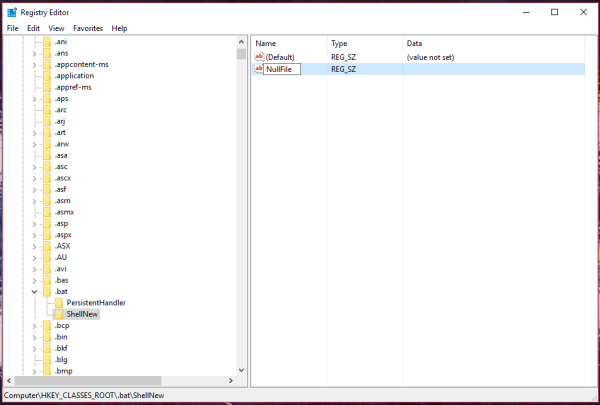
- Again, under the ShellNew subkey, create a new string named ItemName. Set its value to the following string:
@%SystemRoot%\System32\acppage.dll,-6002
Now, open the context menu of any folder. You can just right click the empty space on your Desktop. It will have a new item in the "New" context menu: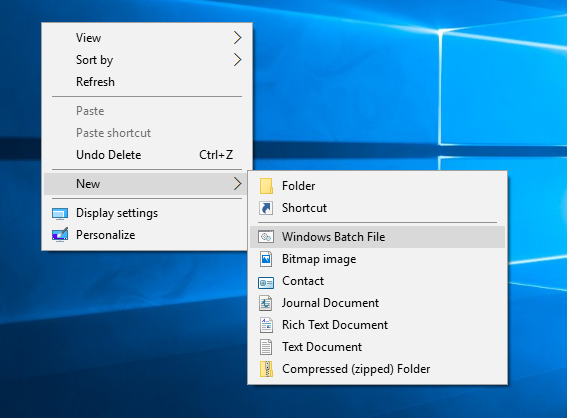
Once you click it, a new empty *.bat file will be created: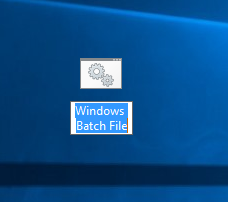
The next time you need to create a batch file, you can use this context menu item to save your time. You can use the same trick to create a .cmd file.
The same can be done using Winaero Tweaker. Go to Context Menu -> "New" Menu in File Explorer: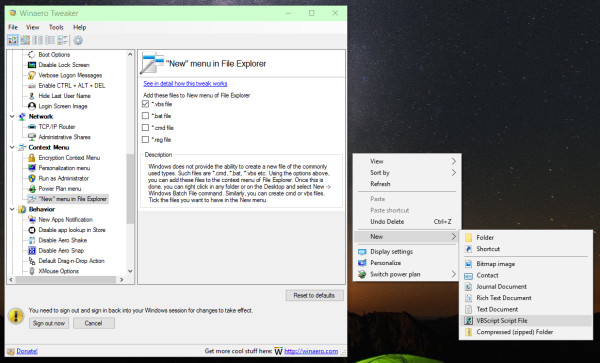 Use this option to avoid Registry editing.
Use this option to avoid Registry editing.
Also, I made ready-to-use Registry files, so you can avoid manual Registry editing. An undo file is also included.
That's it. This tricks works in Windows 7, Windows 8 and Windows 10. It should work in older Windows versions too.
Support us
Winaero greatly relies on your support. You can help the site keep bringing you interesting and useful content and software by using these options:
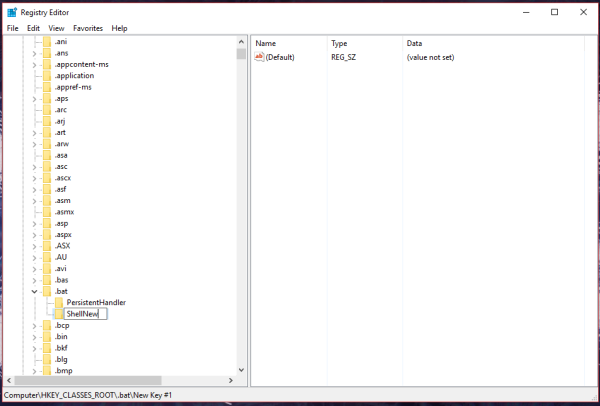
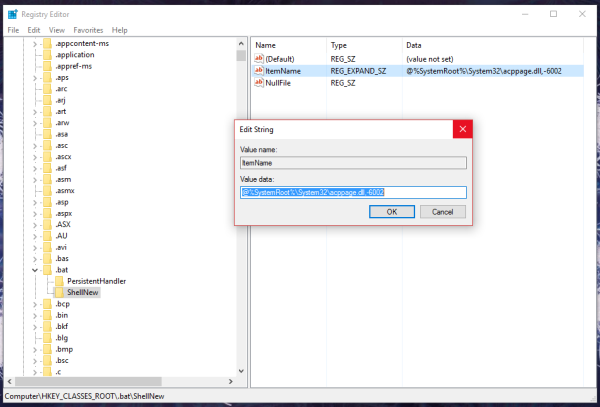

This is great! Thank you so much!
You are welcome.
Hmm.. cool!
A nice way to crate a file would one without any ending-extension.. is this possible too? ^^
Let me see. I guess it is not possible.
Save this as a .reg file, and it will create a file called New Generic File with no extension.
Windows Registry Editor Version 5.00
[HKEY_CLASSES_ROOT\.generic]
@=”genericfile”
[HKEY_CLASSES_ROOT\.generic\ShellNew]
“NullFile”=””
“IconPath”=”%SystemRoot%\\System32\\imageres.dll,2”
[HKEY_CLASSES_ROOT\.generic\ShellNew\Config]
“NoExtension”=””
[HKEY_CLASSES_ROOT\genericfile]
@=”Generic file”
Great! Thank you.
Does the zip contain the .cmd?I can’t access it because(in time when i wrote this comment) I’m on the phone.
It contains two *.reg files.
I believe this is what he wants. Save as reg file or open regedit, and add manually this:
Windows Registry Editor Version 5.00
[HKEY_CLASSES_ROOT\.cmd]
@=”cmdfile”
[HKEY_CLASSES_ROOT\.cmd\ShellNew]
“NullFile”=””
You will then have a right-click item which will add “New Windows Command Script.cmd” on your desktop.
The problem was solved at 16:55 (GMT+1) by the command script. I’ve just edited the “@%SystemRoot%\System32\acppage.dll,-6002” into “@%SystemRoot%\System32\acppage.dll,-6003” or so. And also, in the script is included the uninstaller, which removes entire key. By the way, thanks for help :)
An interesting and useful variant would be to figure out how to nominate a template file, so .REG could contain the appropriate header and a Unicode .TXT file option could be made available.
To create a template, you just have to add a StringValue called ‘FileName’ with the value set to the path of the template.
New > *.ps1 file doesn’t work on Windows 11, only on Win10. Anyone know how to get it to work on Win11?
would love if you could add a .txt option, was built into 10 but missing in 11